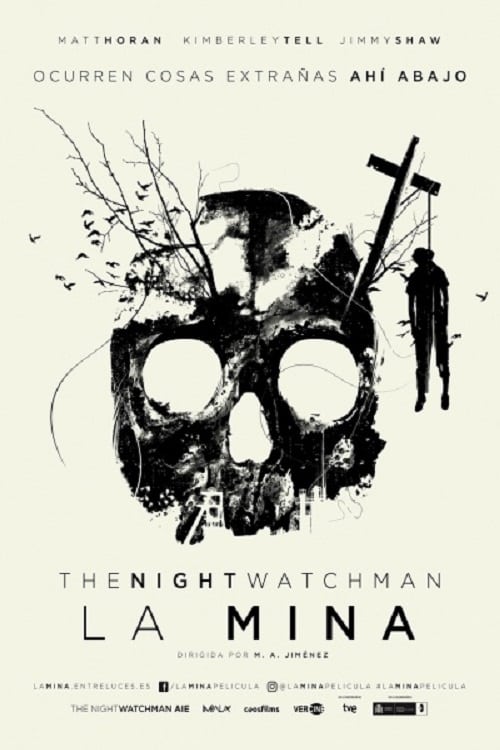Spoilers:
- Thomas dies unexpectedly in sleep.
- Vera is found alive and safe.
- Pixie helps save her tribe’s land.
- Bucky runs away but returns.
- Wood Mountain helps Pixie in search.
- Joe’s boxing career takes off.
- Housemaid gig isn’t what Pixie expected.
- Louise is haunted by Thomas’s dreams.
The Night Watchman: Quick Stats
Book Details
- Author: Louise Erdrich
- Genre: Historical Fiction
- Published: March 3, 2020
- Pages: 464
- Publisher: Harper
Plot Summary
A depiction of Native American struggles in 1953. The novel follows Thomas, a night watchman, as he battles against Native dispossession.
Key Characters
- Thomas Wazhashk: Night watchman and leader
- Patrice Paranteau: Factory worker, family supporter
- Valentine: Patrice’s friend
Awards
- Pulitzer Prize for Fiction: 2021 Winner
- Goodreads Choice Award Nominee: 2020
Reception
Widely praised for its storytelling and historical depth. Some critiques focus on pacing issues.
Themes
- Identity and Displacement
- Community and Activism
ISBN
978-0-06-267118-9
“The Night Watchman” by Louise Erdrich is an emotionally riveting exploration of indigenous identity and sovereignty, entwined within a narrative tapestry of personal struggle and cultural preservation. The novel centers on Thomas Wazhashk, the night watchman of a factory and his fight against the federal Indian termination bill that threatens to uproot indigenous communities from their ancestral lands. Erdrich plunges readers into a perceptively historical narrative, teeming with raw realities of Native American history.This brilliant piece, interwoven in time’s fabric, peers introspectively into the fickleness of memory and resilience during existential threat, slinging us between the roaring world of the living and the spectral echoes of the past. Erdrich’s deft characterization ensures the myriad characters walking their individual paths through tales of loss, haunting past, vulnerability, courage, and many shades of love, remain etched in readers’ psyche.Deeply insightful and profoundly knowledgeable, “The Night Watchman” isn’t just a narrative, but an education. Erdrich effortlessly draws readers into the Native American culture, maps the labyrinth of legal manipulation, and outlines tribal history with pedagogical finesse. Connection to the land and the vastness of cultural heritage unfurl in elegiac prose, acquainting readers with a history lesser known.Emotionally provocative, Erdrich’s monumental work challenges readers to witness the invisible struggle of a marginalized community, compelling us to question our world view, shedding light on the shadowy recesses of history. Its rich cultural detail strikes a meaningful conversation on the costs of progress, shattering the manacles of ignorance.”The Night Watchman” is a compelling literary portrayal of an era when the indigenous legacy was on a precipice. Planted firmly on the line between spirituality and humanity, Erdrich’s work is a provocative anthem of resilience that radiates hope even when surrounded by somber injustice. Her prose, miraculously tender and potent, reaffirms the author’s storytelling prowess, painting an evocative portrait of a community’s fight to survive.
Introduction to The Night Watchman
“The Night Watchman” is a novel by Louise Erdrich, published in 2020. This compelling piece of fiction is grounded in historical events from the life of Erdrich’s grandfather, Patrick Gourneau. He was a dedicated night watchman and a leader of the Turtle Mountain Band of Chippewa. His fight against Native dispossession in the 1950s forms the novel’s backbone.
Intriguing Aspects
- The book won the Pulitzer Prize for Fiction in 2021, confirming its literary power.
- Erdrich intricately blends multiple narratives, pulling readers into a world where personal and political realities intertwine.
- An interesting fact: some characters are based on real people, adding authenticity and depth.
- Set in rural North Dakota, the novel captures the essence of Native American life and political struggle.
Speculative Elements
Some speculate about the author’s personal connection and the authenticity of the events depicted. The similarities between the protagonist, Thomas Wazhashk, and the author’s grandfather raise questions. Erdrich attributes the diligent, admirable, yet fatigued character traits to her grandfather.
Public Perception Over Time
At release, “The Night Watchman” was praised for its poignant storytelling and attention to historical detail. Critics appreciated Erdrich’s ability to weave the personal with the political. Some readers felt it was a watershed moment in Native American literature.
Over time, discussions have often centered on its impact on indigenous representation in literature. While some argue it’s a seminal work, others criticize it for narrative complexity leading to a sprawling storyline.
Conclusion
“The Night Watchman” remains significant in modern literary culture. It is both a personal tribute and a formidable commentary on socio-political struggles. It continues to resonate with audiences seeking a deeper understanding of Native American history.
The Night Watchman: Beat by Beat
Thomas Wazhashk: The Watchful Eye
Thomas, the night watchman, juggles factory duties with a fight against Native dispossession. A Turtle Mountain Chippewa tribe member, he’s not just a guard but a guardian of his people’s future.
Patrice Paranteau: The Striver
Patrice, or Pixie, is the unstoppable force from the reservation aiming for a better life, battling personal demons and systemic challenges without losing her spirit. She’s a worker at the gem plant, a sister, and a daughter, with dreams bigger than her paycheck can cover.
Termination Bill: The Threat
1953. Congress moves to “emancipate” Native Americans from federal recognition and benefits—a sanitized way of stripping rights and land. This bill is a ticking time bomb for the Turtle Mountain Chippewa.
The Road Trip: The Battle
Thomas and a crew of unlikely activists pack into a jalopy, heading to Washington, D.C. It’s not just a trip; it’s a mission to save their tribe’s identity against the backdrop of 1950s America.
Patrice’s Quest: The Personal Journey
While the political storm rages, Patrice embarks on a quest of her own—to find Vera, her missing sister, in Minneapolis. It’s a dangerous, eye-opening venture that intertwines with the larger narrative of family and survival.
Millie’s Secret: The Twist
A scholar’s discovery shakes the ground. Patrice’s friend Millie carries a heavy secret with the power to impact their future, revealing unexpected connections and truths.
Victory and Loss: The Resolution
Against all odds, grassroots activism makes waves in D.C., bringing a mix of victory and loss. The bill’s outcome is a testament to the resilience of the Turtle Mountain Chippewa, yet the fight for justice leaves its scars.
The Legacy: The Echo
In the end, “The Night Watchman” is more than its historical context—it’s a narrative of resistance, resilience, and the unbreakable spirit of a community determined to protect their home and each other.
Final Take
Erdrich’s work is a masterclass in storytelling, blending personal and political battles into a saga of survival and solidarity. Each beat of the story pulses with the heart of a community facing down erasure, anchored by characters rich with life’s complexities.

Analysis of The Night Watchman
Story Opening Breakdown
The opening of “The Night Watchman” sets the tone quickly. The reader is introduced to the protagonist, Thomas Wazhashk, through a vivid scene that captures his daily routine as a night watchman at a chip factory. The language is clear and straightforward, allowing readers to step right into Thomas’s world. The opening creates a sense of urgency and highlights the struggles faced by Native Americans during this time period.
Story Formula Breakdown
The story follows several key structures:
- Introduction: Introduces Thomas and his struggles.
- Rising Action: His thoughts about the impending termination of the Indian Reorganization Act.
- Climax: The confrontations between characters and the impact of political decisions.
- Falling Action: The aftermath of conflicts and realizations.
- Resolution: Characters learn lessons about identity, community, and resilience.
Character vs. Story Driven
The story is more character-driven. While it includes important historical and political themes, the depth comes from the characters’ inner lives and relationships. Readers get invested in Thomas and other characters, and their journeys feel relatable and poignant.
Memorable Characters
Thomas Wazhashk is memorable due to his relatability, kindness, and resilience. His anger over injustices is balanced by a profound sense of duty to his family and community. The contrast between his quiet life and the larger political issues creates depth.
Main Characters Description
Thomas Wazhashk: A night watchman who grapples with the effects of the proposed legislation on his community. He’s compassionate, hardworking, and deeply connected to his heritage.
Pearly): Thomas’s niece, who is fiercely independent and reflective of the younger generation’s struggles and aspirations. Her character highlights the tension between tradition and modernity.
Miss Clara: An important figure in Thomas’s life, she embodies the wisdom and strength of elders. Her perspective is critical in the story, grounding it in the community’s history and values.
Woodland Massacre Survivors: Represent the historical weight and trauma felt by the community, illustrating the long-standing issues faced by Native Americans.
Story Flow Template
When writing a character-driven story like “The Night Watchman,” consider following this structure:
- Opening Scene: Establish the main character’s routine and immediate environment.
- Character Backstory: Include flashbacks or anecdotes that inform current struggles.
- Inciting Incident: Introduce a conflict or change that propels the character forward.
- Character Relationships: Show the protagonist’s interactions with others and how those relationships affect their journey.
- Challenges: Develop obstacles tied to both personal and societal issues.
- Climax: Peak emotional and narrative tension where the protagonist faces their greatest challenge.
- Falling Action: Explore the consequences of the climax and character growth.
- Resolution: Close character arcs while addressing larger themes or conflicts. Reflect on how characters are changed.
Simple Story Overview
In simple terms, “The Night Watchman” is about Thomas Wazhashk, a Native American man, who works the night shift while grappling with the social and political challenges his community faces. The story reflects themes of resilience, identity, and the fight against systemic injustices.
Inciting Incident
The inciting incident in “The Night Watchman” occurs when the protagonist, Thomas Wazhashk, discovers that his community faces threats from an impending government policy that will displace Native Americans. This moment triggers a chain of events that catalyze the story.
Symbolism lies in the watchman himself. He represents vigilance and resistance. His job as a night watchman symbolizes the struggle to protect his people and their way of life. It’s both a literal and metaphorical stance against encroaching darkness, embodying hope.
Act Structure
The book follows a three-act structure:
-
Act One: Introduction
We meet Thomas and other key characters, establishing their mundane lives and cultural context. The act sets up Thomas’s internal conflict about his responsibilities, both to his job and his community. For example, the introduction of characters like Patrice demonstrates their hopes and dreams.
-
Act Two: Rising Action
This act dives into the struggle against threats to the community. Tension builds as the policy unfolds. Characters become more active in resistance. For instance, we see Patrice grow from a passive figure to someone who directly challenges authority. This creates a strong sense of stakes for the community’s survival.
-
Act Three: Climax and Resolution
The climax occurs when Thomas confronts the systemic power that seeks to uproot his people. His stand is both personal and communal—a culmination of all previous struggles. The resolution addresses the aftermath of this confrontation and its impact on the community.
Climax
The climax strikes with emotional intensity. Thomas stands firmly against those who threaten his home, symbolizing a fight not just for survival but for dignity and identity. The build-up to this moment is fueled by a series of escalating confrontations and increasing awareness of the stakes involved.
Building Tension and Release
The narrative builds tension through a mix of personal and political struggles. As government actions intensify, Thomas and Patrice face their fears, leading to a gradual rise in stakes. Each small victory and setback enhances the feeling of urgency.
Release comes after the climax, where the characters must grapple with the implications of their choices. The outcome offers a bittersweet reflection—there’s relief, but also a recognition of ongoing challenges.

The Ending of The Night Watchman Explained
The Night Watchman by Louise Erdrich ends with a shock and a resolution to many character arcs. After a tough battle against injustices facing Native Americans, the characters face their fates in ways that reflect their resilience and growth.
Ending Overview
At the end, Thomas Wazhashk, the protagonist, stands firm for his community against the U.S. government’s attempts to erase Native culture. The resolution ties together the personal struggles of Thomas and other characters, reinforcing their connections to each other and their land.
Writers’ Categorization
Writers might categorize the ending as bittersweet realism. It shows victories but framed by the harsh realities of life for the characters.
Symbolic and Thematic Dimensions
- Symbolic: The night watchman represents a guardian of tradition and values, showing how one can protect against darkness.
- Thematic: The theme of resilience emerges strongly. Despite facing overwhelming odds, the characters uphold their dignity and fight for what’s right.
- Speculative: The ending raises questions about the future of Native identity and culture, suggesting that the fight continues.
Loose Ends and Payoffs
The ending resolves many conflicts, including Thomas’s determination to secure his people’s rights and the fates of several supporting characters. It also clears up questions about community and connection between individuals and their heritage.
Character Changes
By the end, Thomas grows from a passive figure to an active fighter for his people’s rights. Other characters also find their voices and strength, showing significant growth through their struggles.
Lessons for Writers
Writers can learn the power of resolution balanced with realism. A strong ending doesn’t have to tie everything up neatly but can instead show growth, resilience, and the ongoing nature of struggle. Ambiguity can also provoke thought, keeping readers engaged with the themes long after the book ends.
The Dialogue Style in The Night Watchman
The dialogue in “The Night Watchman” is authentic and rooted in the realities of Native American life. Characters speak with a distinct voice that reflects their background, fears, and hopes. It balances everyday conversations with moments of deep emotional significance.
Examples of Dialogue
Characters often express their struggles candidly. For instance:
“What's the use of fighting when you've already lost so much?”
This line captures a sense of resignation and pain in a character’s voice.
Quintessential Character Moment
A powerful moment occurs when a character confronts their fears about change and culture. The dialogue rings true as it encapsulates their internal conflict regarding identity and survival.
Iconic Lines
- “We are not just remnants of the past; we are here.”
- “Hope is a stubborn thing.”
Uniqueness of Dialogue
The dialogue is infused with cultural references and idioms that are specific to the Native American experience. It doesn’t shy away from incorporating tenderness and humor, making it relatable while also historical.
Dialogue Density
The script is dialogue-heavy, which allows for nuanced character development. The interactions between characters reveal their histories and relationships without lengthy exposition.
Realism of the Dialogue
The dialogue feels realistic, capturing the essence of life on the reservation. There’s a natural flow that resembles how people speak in day-to-day life, making it accessible to readers.
Lessons for Writers
- Use dialogue to reveal character depth.
- Integrate cultural elements into dialogue for authenticity.
- Balance between humor and seriousness can add layers.
Scene Walkthrough
In one poignant scene, two characters sit on a porch sharing a moment of silence. The dialogue begins with a simple observation:
“Looks like rain.”
They exchange thoughts about the weather, but the conversation shifts to deeper themes:
“Rain can wash away the past, but it can also flood the present.”
As they discuss their shared history, their voices grow more intense, revealing their anxieties about the future. This transition is seamless and highlights the weight behind their words.
In this scene, the blend of everyday chatter and profound insight illustrates the author’s skill in crafting dialogue that resonates. It showcases both personal and cultural struggles, allowing readers to connect with the characters’ experiences.
The Night Watchman
In shadows held, a figure stands, not for glory nor demand. Each tick of clock, each breath of night, A watchful gaze in dimmest light.
Eyes sharp as knives, guarding dreams, counting lives. Silhouettes in the periphery, ghosts of what might never be.
Whispers of hope, flickering fast, echo of futures, shadows cast. Time, a river, swirling, deep, where secrets lie and sorrows seep.
But what of the heart, frozen yet free, in this march of despair, who dares to see?
Raindrops tap like anxious fingers, upon the roof where silence lingers. The watchman waits, with patient breath, in the quiet midst of living death.
Tales untold, in silence sung, he guards the night, his song unsprung. For every watchman knows this truth: to hold the past is to be uncouth.
And so he stands, still, unfazed, a monument to those amazed— in darkness, light begins its birth, through simple acts, we forge our worth.
Writing Lessons from The Night Watchman
-
Authenticity in Voice
Each character speaks with a distinct voice. Erdrich captures the nuances of their backgrounds, making dialogue feel real. Pay attention to how different experiences shape speech.
-
Interweaving Narrative Threads
The novel blends multiple storylines without losing focus. Use this technique to create depth and complexity in your narrative. Each thread should enhance the others.
-
Historical Context as Character
The historical issues affect character motivations. Consider how the backdrop of your setting influences your characters. The environment can be as compelling as the people in it.
-
Subtlety in Theme
The themes of resilience and identity unfold gradually. Avoid hitting readers over the head with messages. Let them emerge through the story instead.
-
Symbolism Through Objects
Erdrich often uses objects to symbolize larger themes. Think about how everyday items can carry meaning and resonate with readers on different levels.
-
Character Flaws
Characters are not perfect. Their flaws make them relatable. Balance strength with vulnerability to create well-rounded individuals.
-
Non-linear Storytelling
The narrative doesn’t always follow a straight path. Use flashbacks or shifts in perspective to enhance tension and engage readers more deeply.
-
Emotional Weight in Simplicity
Erdrich’s prose is often straightforward yet impactful. Focus on clear, concise language that carries emotional weight without unnecessary embellishment.
-
Community as a Character
The community in the book acts as its own entity. Reflect on how settings and communities influence your characters’ actions and decisions. This adds a layer of realism.
-
Exploration of Identity
Identity struggles are central. Characters navigate their cultural heritage and personal aspirations. Make your characters’ journeys of self-discovery relatable and thought-provoking.
Discography of Louise Erdrich
- Love Medicine (1984)
- Tracks (1988)
- Stone Heart (1990)
- The Beet Queen (1986)
- Alphabet Bar (1994)
- The Antelope Wife (1998)
- Plague of Doves (2008)
- Shadow Tag (2010)
- Round House (2012)
- LaRose (2016)
- The Birchbark House (1999)
- The Night Watchman (2020)
- Nightingale (2021)
Writing Style
Erdrich’s writing combines rich native American storytelling with intricate character development and social commentary.
Review 1:”This is Erdrich at her radiant best… In this kaleidoscopic story, the efforts of the night watchman align with the political awakening of the “Chippewa Federation” to resist the so-called emancipatory promise of termination… It’s a fierce, propulsive book, running on a kind of superpowered hope, like Patrice.”Source: The New York TimesLink: https://www.nytimes.com/2020/03/05/books/review-louise-erdrich-night-watchman.htmlReview 2:”The Night Watchman is above all a story of resilience and resistance… Through the steady accumulation of little victories and inevitably some setbacks, Pixie and Thomas fight for respect and justice in their personal, professional, and political lives—creating a story that feels at once true to the past and urgently of the moment.”Source: The AtlanticLink: https://www.theatlantic.com/magazine/archive/2020/03/louise-erdrich-the-night-watchman/605517/Review 3:”This exquisitely rendered novel is both complex and accessible, filled with compassionate characters, both real and imagined… Erdrich makes her case quietly, with great dignity, through an appeal to our capacity for empathy and our shared debt to historical fact… Despite the specter of termination that hovers over the entire novel, it is infused with hope and humor, love and loss.”Source: BookPageLink: https://bookpage.com/reviews/24673-louise-erdrich-night-watchman-fiction#.XjoHDFVKiM8Review 4:”The novel is based on the extraordinary life of Erdrich’s grandfather Patrick Gourneau… While the novel is embedded with timeless and universal themes including love, cultural identity and the power of family, it is also a deeply relevant narrative to our present political environment regarding land ownership, repatriation and terminated treaties… “The Night Watchman” is a stunning book.”Source: San Fransico ChronicleLink: https://www.sfchronicle.com/books/article/Review-Erdrich-s-The-Night-Watchman-sheds-15089052.phpReview 5:”The Night Watchman manages to be a page-turner while still peeling back complex layers of native American history and bureaucracy, revealing the tenacity it took just for them to maintain their land and rights. The backdrop to Erdrich’s book is set by page two: a plan to disestablish native tribes… Erdrich’s writing shines in the concrete details of each character’s rich and complicated lives.”Source: NPRLink: https://www.npr.org/2020/03/04/812265536/the-night-watchman-is-rich-resonant-anxiety-inducing-sometimes-funny
- The Night Watchman: A Novel – Erdrich, Louise: Books
- The Night Watchman by Louise Erdrich | Goodreads
- The Night Watchman (novel) – Wikipedia
- The Night Watchman, by Louise Erdrich (Harper) – The Pulitzer Prizes
- The Night Watchman by Louise Erdrich / Birchbark Books & Native Arts
- ‘The Night Watchman’ is this year’s One Book selection …
- The Night Watchman by Louise Erdich : r/IReadABookAndAdoredIt
- The Night Watchman: A Novel (Paperback) | Ampersand Books
- Louise Erdrich’s The Night Watchman – Josephy Library of Western …
- Reading Through the Awards: The Night Watchman by Louise Erdrich




Leave a Reply